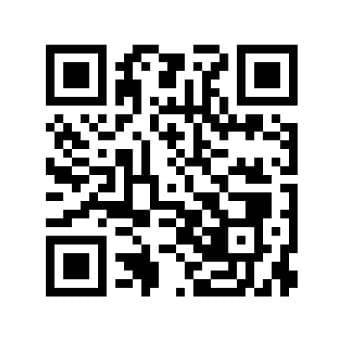Blog Posts
Three Common Learning Differences in Children

As parents, we want to give our children the best opportunities to grow and learn. But not all children learn the same way, and some may even face learning challenges. While some call these challenges learning disabilities, we at Jiguar prefer to call them learning differences.
There are several common learning differences among children which often present themselves in childhood. While learning differences can create challenges for children and their families, there are ways to address them. Successfully treating each learning difference can mean giving your children wings to soar to new heights with their education and beyond.
Dyslexia
Dyslexia is the most common learning difference among children. According to Yale University, dyslexia affects 20 percent of the population and represents 80 to 90 percent of all learning differences. It is the most common neuro-cognitive disorder.
Dyslexia affects one’s processing skills when it comes to language and reading. Some symptoms of dyslexia include:
- Delayed speech.
- Struggles with phonetic awareness (breaking down words into their constituent sounds).
- Reversing the position of letters when reading.
- Difficulty with reading comprehension.
- Trouble learning auditory processing such as new vocabulary.
- Disorders with visual processing, which can impact the understanding of directions, spelling, proofreading, or copying from a text.
People with dyslexia can learn to read, but reading will always take extra effort. While dyslexia can’t be cured, there are interventions and accommodations so children can become accomplished students and adults. There are no medications to treat dyslexia, but there are educational interventions to teach effective methods for living with this learning difference.
Trained specialists work with dyslexic children to teach them new reading skills. An evaluation of a child’s specific needs can be conducted to determine appropriate methods for helping them become a competent reader and more confident learner.
The Mayo Clinic reports teachers can employ a variety of techniques in school that involve hearing, vision, and touch as ways to improve reading skills. Using several senses to learn can help a child better process information.
Parents are encouraged to read aloud with their child. This valuable bonding time will improve the child’s reading skills. When working with a dyslexic child, it’s important to remain patient and supportive while providing positive encouragement.
ADHD
Attention Deficit Hyperactivity Disorder (ADHD) is a neurodevelopmental learning difference. It affects one’s ability to control their impulses, regulate hyperactivity, or pay attention. It’s the second most common learning difference and affects people of all ages, though it’s most commonly diagnosed in children.
Symptoms of ADHD may include the following:
- Anxiety
- Depression
- Sleep Disorders
- Hyperactivity
- Inability to focus
There is no cure for ADHD, but it can be successfully managed and some symptoms may improve as a child ages, according to the Centers for Disease Control and Prevention (CDC). The CDC reports the estimated number of children aged three years to 17 years ever diagnosed with ADHD is six million (9.8 percent) using data from 2016-2019.
Medication are available to address some of the symptoms of ADHD. Unfortunately, they often come with side effects such as a loss of appetite or diminished interest in things the child once enjoyed. Additionally, there have been medication shortages for ADHD treatment in the recent past.
Behavioral therapy is another treatment option to help children recognize their symptoms and learn coping skills. Parents are able to participate in behavioral therapy to learn how to assist their child in coping successfully with ADHD. Behavioral management is the first line of treatment for ADHD in children younger than six years of age.
Dyscalculia
Dyscalculia is another common learning difference that affects a child’s math skills. This learning difference can make it challenging for children to grasp math concepts, solve math problems, and perform calculations. Children with dyscalculia struggle with basic math concepts and because math employs building concepts, they can quickly fall behind and take years to catch up with their peers.
Some symptoms of dyscalculia includethe following:
- Trouble with mathematical concepts such as time, estimation, or measurements.
- Struggle to perform basic math problems.
- Issues following the order of operations.
- Problems counting or grouping numbers.
As with dyslexia, there is no medication to treat dyscalculia. Children with this learning difference benefit from specialized instruction, particularly early on. There are a wide range of strategies, therapies, and supports for children with dyscalculia.
Multisensory instruction, teaching math concepts using all senses from sight and hearing to touch, is one option that works well for some children in understanding match concepts. Using objects to see quantities can make math concepts less theoretical and more concrete for children with dyscalculia as well.
In schools, teachers can offer special instruction for dyscalculia such as using graphing tools, math notation tools, and graphic organizers. Technology can also play a role in supporting learning differences.
At home, parents can engage children in fun activities to support them in building stronger math skills such as playing board games. Finding common ground between something the child enjoys and applying math concepts can also build math skills.
Public School or Homeschool?
Parents have the option of sending their children to public school where they will likely be “mainstreamed” with other students their age. In a public-school setting, they may need additional support through special education such as an individualized education plan (IEP) or through a 504 plan. Such plans are reviewed on an annual basis with the child, parents, and teachers present to determine what may be needed for the student to achieve academic success.
Some parents choose to homeschool their children, especially those with learning differences. Children with learning differences may struggle in a traditional classroom setting for several reasons including the inability to focus or anxiety caused by their learning difference. Public schools may or may not provide special education services to children who are homeschooled. You will need to check with your local school district to determine what support it can offer if you choose to homeschool your child.
For more information about learning differences, diagnosis, or treatment, visit jiguar.com or email Jiguar at info@jiguar.com





